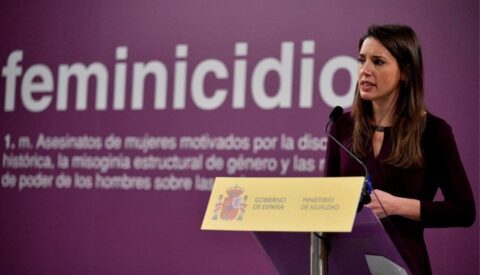Saving Urban Typography In A Digital World
Typography is a familiar sight on the streets, but it has also succumbed to fashions and the passage of time. Rescuing urban signage helps to preserve this part of our collective heritage.
Article

Article
The strokes, drawn to the millimeter, scratch the thin sheet of paper. One slip, just the slightest mistake, and all the work will be ruined. In silence, a teacher observes his pupils. The future of their education depends on having studied every detail of each character. Only excellence is acceptable in the imperial school.
On the other side of the world, a few hundred monks all over Europe strive to copy the books they keep in monastery and palace libraries. They devote hours to train their attention span, straining in the half-light, to maintain fidelity to the original book. Some slip a few complaints into the manuscript margins.
On the other side of the world, a few hundred monks all over Europe strive to copy the books they keep in monastery and palace libraries.
Then came Gutenberg, with the Bible printed in textured type, and then the thousands of typefaces now found in data banks and on computers.
Typography has accompanied humanity since the origin of printing techniques, an extension of the ancient art of calligraphy. Tens of thousands of styles, aiming to unite beauty and intelligibility — but in the age of the Internet we seem to limit typography to just a uniform few. Is this the end of typography, or are we in a new stage of its reinvention?
Works of art
Many of the beautiful posters of yesteryear, which brought together all kinds of different typography, have been worn by the passage of time. Some lucky posters are in the hands of collectors who preserve these small gems of our recent past. All are part of a moving journey through different historical periods and countries. Some typefaces have been lost to history, but those used during the 20th century still live on in photographs, as well as in many people’s memories.
Many of the beautiful posters of yesteryear, which brought together all kinds of different typography, have been worn by the passage of time
Thus, the work of poster and typographic art lovers is vital to maintain the love and legacy of these scraps of our recent past. This is the case of the Iberian Network for the Defense of Graphic Heritage, which has rescued more than 200 posters from historic establishments in the Spanish capital alone. They have more than 100 members who continue to scour the length and breadth of the country for new additions worthy of rescuing.
The National Library has also carried out projects to restore signage, including some from bullfighting events. The prestigious institution also maintains a remarkable collection of posters available to visitors and experts who wish to study them.
Restored signs and posters are also experiencing a renewed golden age as highly valued pieces of art in decoration. They are not only used in themed establishments, but also in homes and offices where people want a picturesque touch. In most cases, the restorers’ work is delicate, if not intricate. Some pieces arrive in poor condition, whether broken, discolored and oxidized by the passage of time, after being abandoned in damp warehouses or exposed to the elements. In Europe and Latin America, a more common practice is those who devote themselves to sharing typographic designs. But the opposite phenomenon is now happening: new shop owners, graphic designers, printers and trends that seek to preserve or be inspired by the designs of our parents’ and grandparents’ era.
An evolving heritage
Efforts to preserve the typographic arts are not trivial. Calligraphy has become a rarity: as handwriting becomes less common and simpler, limited to brief notes and informal contexts, the need to take care of the way we write has been limited to those who choose to practice it. This makes sense: there is hardly any need to make our handwriting legible to any reader but ourselves. Therefore, calligraphy is neither required in basic education nor does it end up being an imperative that represents basic literacy.
Typography will remain relevant as long as written language exists
Similarly, typography is becoming limited to marketing fashions. The variety of businesses that populate the streets of our cities, the proliferation of large chain stores and the weight of online advertising are leading the proliferation of typefaces in brand image and fashion patterns. For decades, typography even served to differentiate between different types of establishments at a glance.
Similar situations occur with the type of letter used when writing documents in text processors, magazines, newspapers and all kinds of publications. The most used are, currently, Helvetica, Arial, Times New Roman, Avant Garde or Garamond. Some of the oldest are still hanging on, including Gothic and Baskerville, designed in 1757 by British printer John Baskerville.
Nevertheless, typography will remain relevant as long as written language exists, so it is likely to accompany human beings throughout their existence in the universe. As occurred with the invention of the printing press, and before that with woodcut printing in China, half a millennium before Europe, it will be the aesthetic and moral principles of each era’s society, fashions and individual preferences that will determine the evolution of future typography.
This content is part of a collaboration agreement of ‘WorldCrunch’, with the magazine ‘Ethic’. Read the original at this link.






